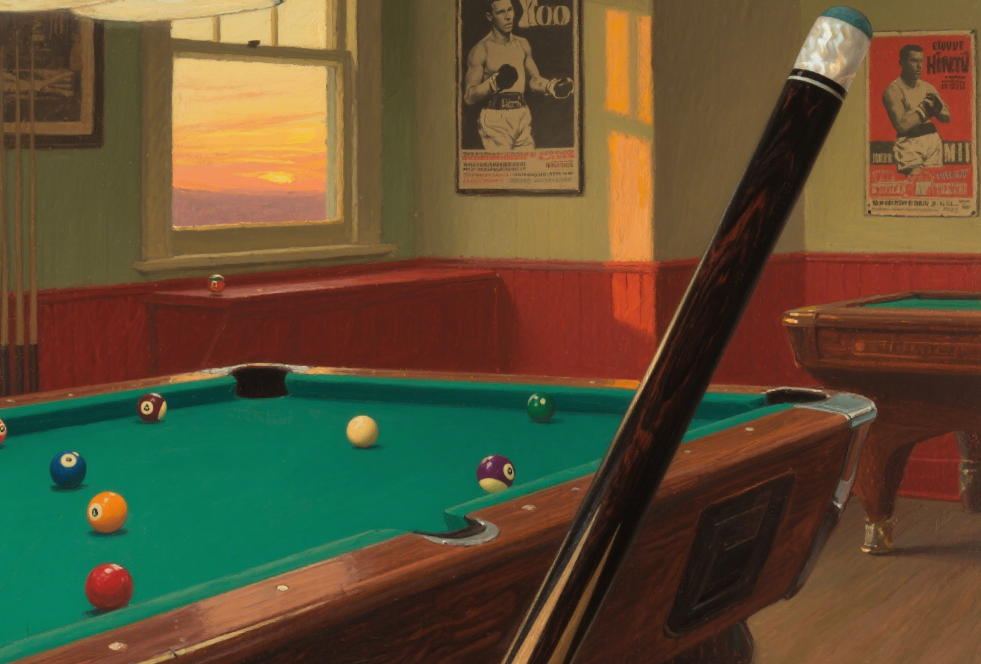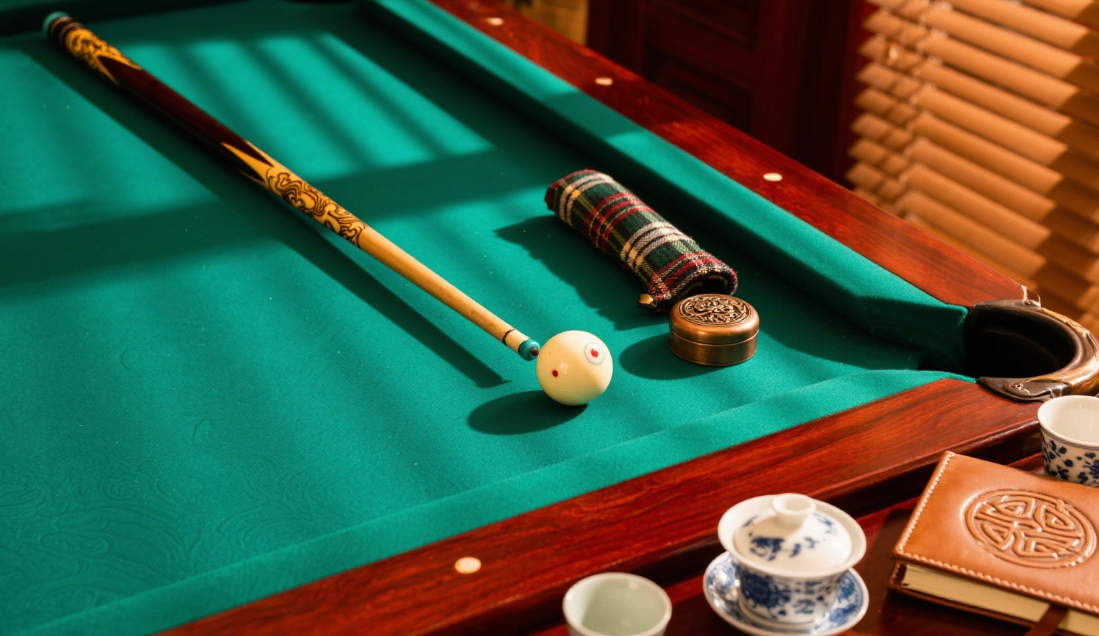Billiards is never just about striking a cue ball into targets—it is both a precise art and a battle of wits. Standing before the table with cue in hand, the world shrinks to nothing but yourself and the layout in front of you. Players must read the subtle angles between balls while calculating possibilities in an instant. Each shot is like solving a puzzle in pure logic—one fraction of an error can alter the entire outcome.
Yet billiards is far from a cold, mechanical pursuit; it is charged with passion. In competition, players’ faces reveal focus and resolve. A flawless shot earns a round of applause, while a misstep draws a ripple of sighs. Within the table’s small boundaries, skill and spirit are amplified, where calm precision and raw intensity collide to form a unique competitive beauty.
At the same time, billiards is also a gentle, welcoming form of social connection. Friends gather around the table not just to trade skills but to share stories and laughter, strengthening bonds in an unhurried way. Whether played in a neon-lit basement hall in the city or on a simple street-corner table in a small town, billiards often carries with it memories and emotions.
Across billiard halls worldwide, what rolls across the felt is more than balls—it is culture in motion. In London’s vintage clubs, etiquette and tradition are carefully observed; in Bangkok’s street corners, games feel spontaneous and playful; while in New York’s trendy lounges, diversity and inclusivity are celebrated. On this modest table, less than three meters long, entire cultural worlds are staged.
Cultural Imprints in the Rules
Even the different rule systems of billiards carry cultural fingerprints. British snooker preserves an aristocratic heritage: players wear formal attire, bow before and after matches, and uphold traditions that mirror Britain’s deep respect for order and decorum. In contrast, American nine-ball embodies a freer spirit—matches are lively, interactive, and spectators are part of the show, reflecting the casual openness of American culture.
Chinese-style billiards, on the other hand, blends the precision of snooker with the rhythm of pool. Its flexible rules, such as the “free shot,” reflect an Eastern philosophy of “harmony without uniformity.” This balance of rigor and adaptability has helped Chinese billiards earn global recognition, building a new cultural bridge between East and West.
Cultural Exchange Beyond the Table
International tournaments are more than competition; they are windows into cultural exchange. Between games, players swap not only tactical insights but also everyday customs. A Chinese competitor may demonstrate chopstick etiquette, while a European counterpart introduces local food traditions. These fleeting moments often teach more about culture than a textbook ever could.
Social media has only amplified this exchange. Thai players have adapted Muay Thai strength training for billiards, sparking viral trends on short-video platforms. European players share clips of “billiards and coffee,” embodying a Mediterranean philosophy of leisure. In these ways, billiards becomes a visual language of culture, transcending borders without the need for words.
New Creations from Cultural Fusion
Where cultures collide, creativity follows. In the UK, some have paired the slow precision of snooker with the energy of Indian Lavani dance, inventing hybrid performances that merge sport and art. On America’s West Coast, young players decorate tables with graffiti, giving rise to “graffiti billiards,” a fusion of hip-hop aesthetics and competitive play.
Commerce has followed this trend. Chinese brands now design tables that maintain the competitive edge of Chinese billiards while borrowing from Western minimalist design. These products, blending tradition and modernity, have successfully entered markets across Southeast Asia, Europe, and the Americas—tangible proof of culture flowing across borders.
From Victorian salons to today’s modern clubs, the billiard table has always been more than sport—it has been a cultural bridge. It allows people of different nations to understand one another through shared passion, weaving Eastern philosophy and Western precision in the instant of a strike. Billiards transcends competition; it is a global cultural language, writing its own chapters in the story of exchange.




